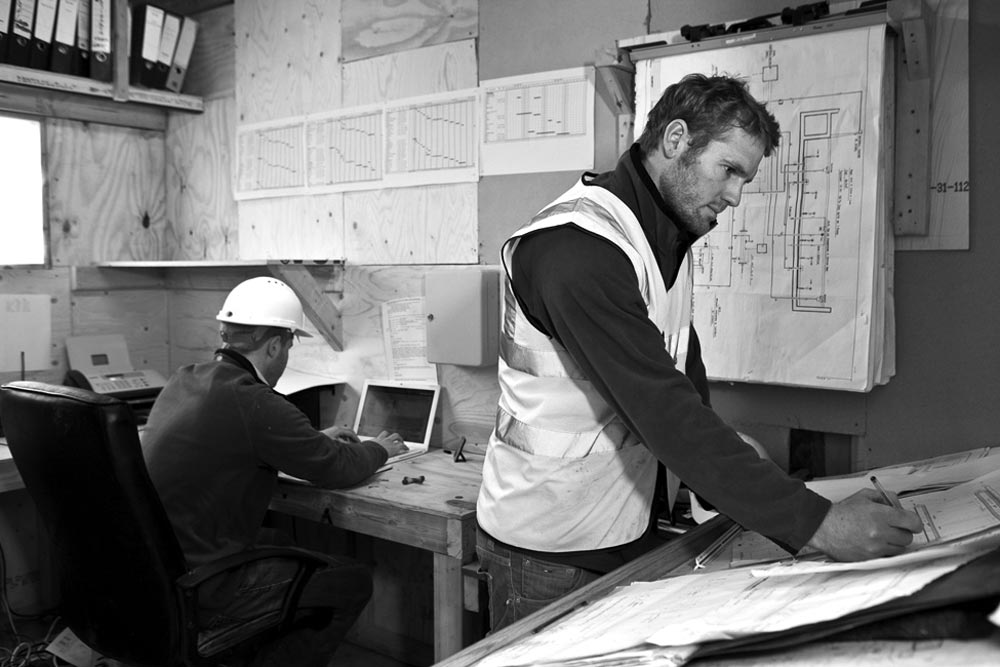
2 Parts of The Planning Phases
The planning phase
To establish the future of the project and the scope of effort needed, the Planning Phase is introduced. It mainly constitutes the parameters needed to describe and remodel the goals while putting a precise plan of action to use. The project management official documents and the plans are all carried out in this process. The nature of project management creates a lot of feedback which ensures repetitive analysis. Thus, faults are eradicated as new information and details are added and discussed. Serious changes coming about the project cycle render consecutive modifications in the initiating phase and the planning phase. Thus amidst this cycle the documentation and the plans change. This depicts the process called, ‘Rolling Wave Planning’, where continual changes occur, referring to the dynamic nature of the project.
This planning process produces the crucial project management plan and necessary documents. These documents cover the aspects like – Quality, costs, communication, acquisitions, scope, time and the risk factor involved. When changes are agreed upon, they result in updates to the current project plan which in turn restores the project documents. Such updates and modifications render the project a new and precise schedule, costs and resources which add to the future of the project.
A must job for the project team is to accommodate and encourage the participation of all relevant shareholders towards the project planning and documents. The team cannot be engaged in a to-and-fro feedback process so the organization might put out a directive of the dates of the end of the initial phase and the upcoming important dates. All such legal and documentation procedures may harm the nature of the project, the project boundaries, project environment and the controlling activities.
The nature of the project is also responsible in other interactive measures related to the planning process group. For example – In some project until some sound planning has been done there is no risk identified. The team thus concludes the present schedule, costs and even planning is destructive and unexpected to the previous assumption. Such changes are seen as updates and the documentation is so modified.
The Planning Process Group constitutes the following project management processes; They are divided into two parts –
Part I
Establish the project management plan
To establish the project management plan, the necessary preparations, actions and other secondary plans are converged together. It is the foremost source of information which decides the planning, execution, control, monitoring and conclusion of the project. IT involves the project charter, results from the planning process and environmental factors.
Determine the fate
Determining the scope of the project is of utmost importance as it provides the detailed description of the project and its result.
Collection of demands
The shareholder’s requirement forms the basis of the project so the collection of their interests and wants is necessary to meet the goals.
Produce a WBS
WBS or a Work Breakdown Structure is the procedure of dividing the project work into small chunks or sub-divisions so as to increase efficiency.
State the Activities
Stating the specific activities deems them to be the actions to be performed to reach the output as and when desired.
Distribute the activities
Distributing the activities involve the classification of the work and stating their relation to each other while also documenting them.
Assess the activity resources
Assessing the activity resources is the process of defining the people, quantity of material, supplies and other equipment needed to perform the activity.
Estimate the activity time
Estimating the activity time is the process of calculating the number of work-hours needed to finish a particular activity with the needed resources.
Establish a schedule
Establishing a project schedule includes the analysis of specific activity time, successive activities, resource requirements and various hindrances which might occur, thus creating a schedule.
Part II
Evaluating costs
Evaluating the costs includes the approximation of all the financial resources needed to complete the activities in the project.
Establish Budget
The process of determining a budget includes the aggregation of the approximate costs of an activity or activities and deciding a standard level of cost.
Propose the quality
Proposing the quality is the procedure of establishing a particular standard or quality of the products or project resources and if the project will comply with those standards.
Create Human Resource plan
Creating a human resource plan involve extensive research into the activities, responsibility, specific roles, skills needed and reporting relations thus hiring the relevant staff.
Propose the communication means
The process is inclusive of determining the shareholder’s needs and demands and establishing a way of communication which could help add insight to the wants.
Establish Risk Management
The process demonstrates on how to conduct risk management on the project activities.
Determine Risks
Characterizing and identifying the risks involved and which may affect the activities of the project.
Determine the quality of risk
This process includes determining the quality of risk and prioritizing them for further research by calculating their probable occurrence and impact on the project.
Performing a quantitative risk analysis
Performing a quantitative analysis includes the mathematical calculation of the risk factor and its exact impact on the objectives.
Plan Risk feedback
Planning the proper response to the risks may enhance the chances and reduce the damages incurred by the impact of risks, thus protecting the objectives.
Plan Acquisition
Identifying the potential sellers, approaching the target-market and establishing purchase decisions while also documenting everything is the planning of acquisition.
To your project success,
Marvin







